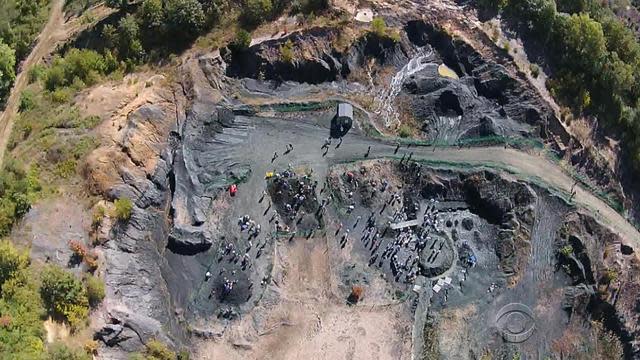by Michael Walsh
 Paleontologists are
excavating a fossil site that might unlock a treasure trove of insights
into the disappearance of the dinosaurs — and it's just a stone's throw
from a New Jersey strip mall.
Paleontologists are
excavating a fossil site that might unlock a treasure trove of insights
into the disappearance of the dinosaurs — and it's just a stone's throw
from a New Jersey strip mall.
The Mantua
Township quarry could be the most important prehistoric dig site in
years if scientists are correct in their hypothesis that it contains
animals that died when a meteorite struck the Earth 65 million years
ago, killing off the dinosaurs.
“In
the end, if our work doesn’t find anything to disprove that, then this
would be the only site in the world where we have fossils of organisms
that actually died during that extinction event,” paleontologist Paul
Ullmann told Yahoo News.
“And that would be really cool."
Every
week, Ullmann, a graduate student at Drexel University in Philadelphia,
heads over to the site behind the Mantua Square shopping center, which
has already turned up loads of prehistoric beasts, from crocodile
ancestors to mosasaurs, which resemble giant Komodo dragons.
“Mosasaurs
had teeth at the top of their mouths that point backward to help
prevent prey from swimming out,” Drexel Professor Ken Lacovara said in
an interview with Yahoo News. “They were really frightening sea
monsters.”
The animals lived in this stretch of New Jersey back when it was a shallow coastal environment and pterosaurs ruled the skies.
Ullmann is
working under Lacovara, who made international headlines after
discovering the gigantic dreadnaughtus in Argentina this past summer.
The
dreadnaughtus, which was 85 feet long and weighed 65 tons, is the
largest land animal whose mass can be calculated accurately because its
skeleton was found largely intact.
“It weighed as much as a dozen African elephants or more than seven T. rex," Lacovara said at the time.
The recent dig site, however, provides a much easier commute for the Drexel professor.
“Dinosaur paleontology began in New Jersey,” Lacovara said. “The world’s first discovered dinosaur was in Haddonfield, N.J.”
Scientists
have known about the Mantua Township site for about a century, but the
idea that these bones go back to the end of the Cretaceous period has
been floating around for only a decade.
“We
are trying to test that hypothesis and see if there is any evidence
that would disprove this,” Ullmann said. “Every week we are going out
and finding more from the bone bed.”
Sometimes
the researchers invite schoolchildren along for the adventures to help
foster a love of science and discovery. Ullmann said they ultimately
want to set up a visitors' center where the local community can learn
about scientific research while watching it in action.
"We are showing them that science is a process rather than a series of facts to memorize," Lacovara said.
Michelle
Bruner, economic development coordinator for the township, told Yahoo
News that it has already applied for land acquisition funds to bring
this vision to fruition.

No comments:
Post a Comment